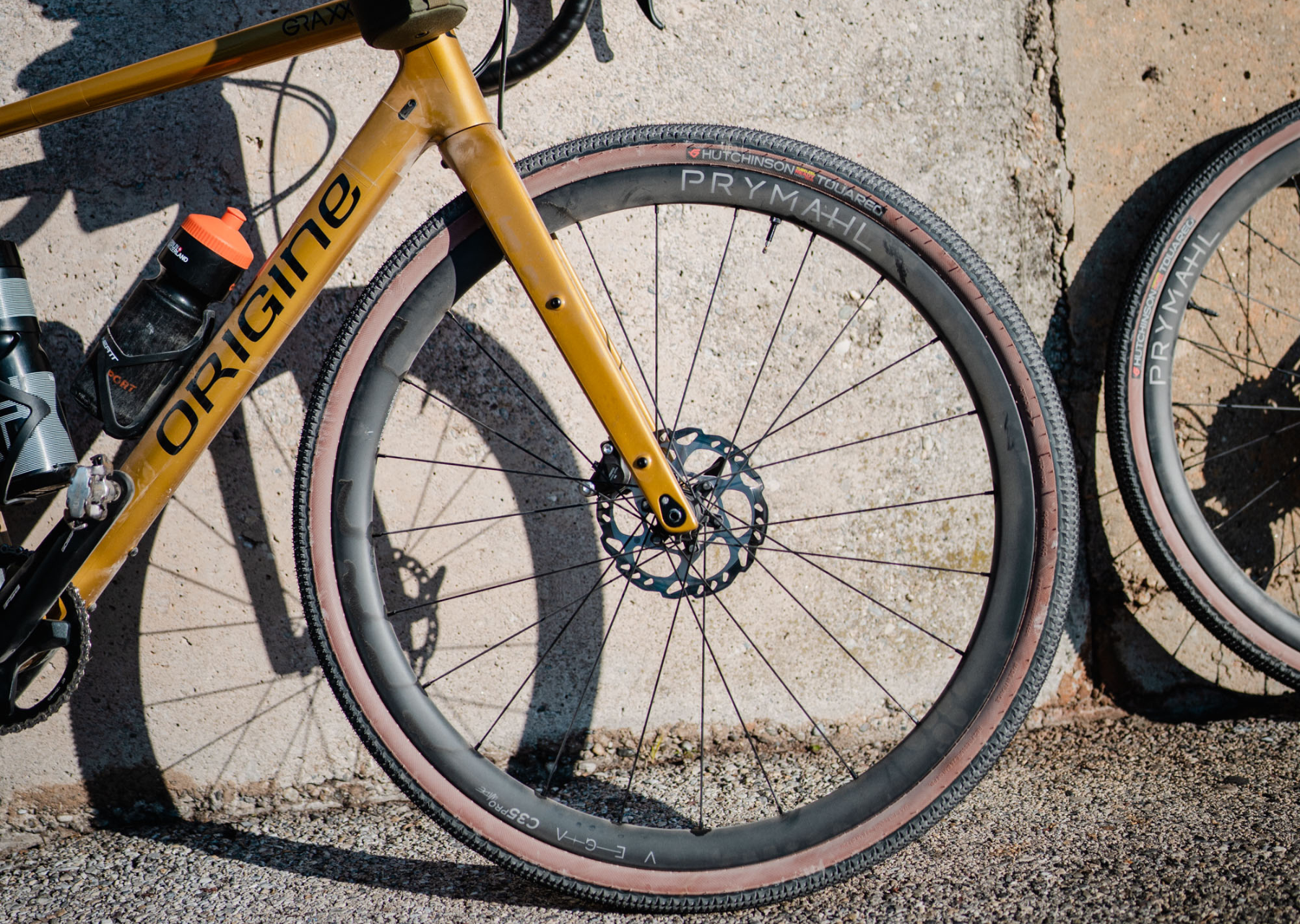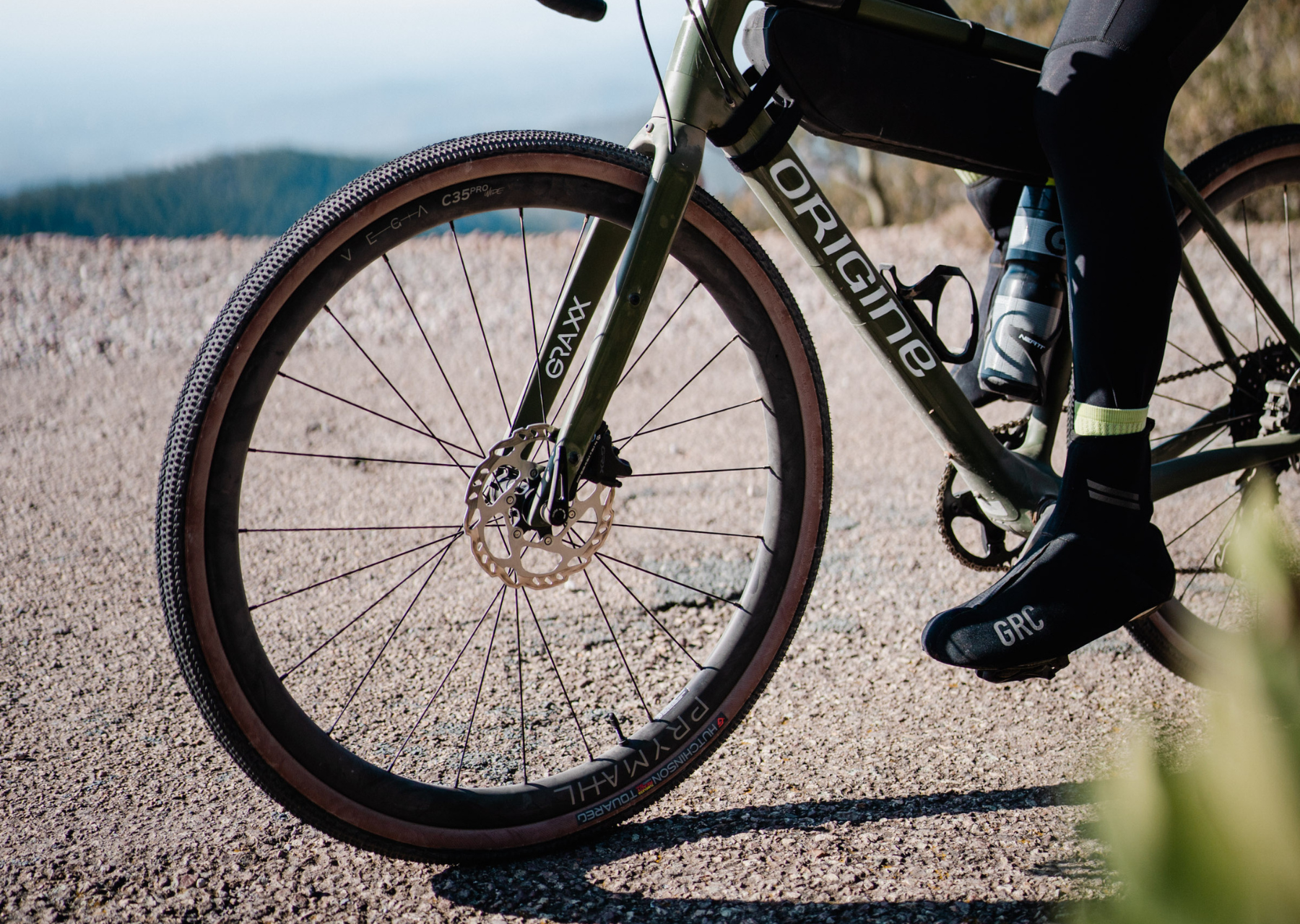How to choose the tyres for your gravel bike

One of the biggest attractions of a gravel bike is that you can ride on a wide variety of terrain - from smooth tarmac to rocky paths, tackling anything and everything in between. And just as all us cyclist are different, we prefer different terrain too… some of you might ride purely road, while others might do anything to avoid tarmac. Your preference will play a big part in choosing the right tyre for your gravel bike.
Obviously we’d all love the perfect tyre that does everything brilliantly - but as with everything we do have to make some compromises somewhere. There’s such a big choice available now that it can be fairly overwhelming, hence why we decided to dive right to the thick of it to help you make the right choice for you.
What makes up a gravel tyre?

Any bike tyre has a few crucial elements:
Tread - the part of the tyre thats in contact with the ground, which will determine the grip the tyre offers and its rolling resistance.
Protective layer - hiding just under the outer tread layer, this material determines the puncture resistance of the tyre as well as its durability.
Carcass - the basic internal structure, which combined with the bead against the wheel rim gives the shape and rigidity needed to ride.
Gravel tyres generally vary between 28-50mm in width. The size you can use will depend the clearance your bike forks and chain stays offer, you’ll need to keep a 6mm gap to avoid the tyres rubbing your frame. What width tyre you choose will also depend on your bike’s wheel size - the larger 700c (standard road bike size) normally take 38-42mm tyres and the smaller 650b (27.5 mtb size) which will allow you to fit a bigger section tyre of typically 42-50mm.
Tyre width plays a big role in both the comfort your bike, its handling on rougher terrain and its efficiency on smoother trails/roads. The perfect tyre that does everything perfectly doesn’t exist in real life unfortunately, but thanks to developing materials and tread patterns some come pretty close!

So which tyre is right for you?

To tubeless or not to tubeless? That is the (first) question!
And the answer will depend on where you ride and your personal preference:
Inner tubes - the traditional bike solution, a rubber inner tube is placed inside the tyre and can be used with any wheel set. More at risk of punctures both from the ground, dreaded thorns, and impacts.
Tubeless - no need for an inner tube as the tyre and wheel rim fit snugly together, and hold a liquid latex style sealant that fills and plugs any small holes, like in a car wheel. There’s a much lower risk of punctures and you can gain comfort in your ride by running a lower tyre pressure without increasing the puncture risk.
Tubeless tyres have ben used in mountain biking for a long time now and so have naturally come across to gravel riding. Negative can be that they need more maintenance, lose tyre pressure faster (you’ll need to add a little air most days) and can be difficult to install. Once up and running though the benefits of tubeless generally outweigh the negatives.
How wide to go?
The width of your tyres will affect both the handling of your bike and the rolling resistance you’ll need to work against on your chosen terrain.
32 to 35mm - ideal for those who mostly ride on the road and sometime dip off onto smooth gravel tracks. The tyres will be much lighter and have less rolling resistance if they are fairly smooth.
38 to 42mm - the most versatile width for those who’d like to ride a bit of everything. You won’t be sacrificing too much weight or rolling resistance on the road but will have enough grip for most trails.
42mm+ - designed for rougher and more challenging terrain, these wide tyres will give better grip over rough ground, plus the ability to reduce your tyre pressure for more comfort.
Tyre profiles
The contact area of the tyre that connects to the ground will determine the grip and feel of your bike:
Smooth - the least rolling resistance for mostly tarmac riding.
Semi knobbly - versatile on gravel trails and the road. Often will have a smoother central section and knobbles on the sides of the tyres.
Full on knobbles - max grip in gravelly, rocky and muddy terrain.
And lastly, tyre pressure!
Tyre pressures play and crucial role and can change everything:
On rougher ground - running a lower tyre pressure will allow more knobbles to be in contact with the ground and therefore increases grip as well as comfort.
On smooth surfaces - higher pressure means less rolling resistance (up to a point) and so your precious efforts will move you forwards faster, always good!
Most tyres have a recommended pressure range marked on the sidewall, so this is a good place to start. You’ll want to adjust the pressures within these limits depending on your weight (lighter=less) and the trail conditions (wet/mud=less).
Our recommendation for a bikepacking trip or gravel adventure

Here at GravelUp, being experts in organising gravel bike trips with hundreds under our belts, we know that tyre choice really makes or breaks a bike set up, and that getting it right is crucial for a good adventure. For both bikepacking trips and any gravel adventure we recommend an all round versatile tyre that offers both comfort and good puncture resistance.
Our choice for our rental fleet
After extensive testing we have chosen the Hutchinson Touareg in a 40mm width for our fleet of bikes due to its incredible versatility across all the different terrains we encounter on our trips. The Touareg is semi knobbly, giving a great smooth ride on compacted gravel and tarmac as well as good grip when the going gets rougher, and excellent puncture resistance!
Advantages of the Hutchinson Touareg
Versatility - good all round performance across a wide variety of terrain, from smooth tarmac to rough trails.
Comfort - the 40mm width gives good absorption of all the little terrain changes, much appreciated over longer distances.
Puncture resistance - thanks to an embedded Hardskin layer, the Touareg has excellent puncture protection, which can be even more appreciated on a multi day bike trip!
In 2025 we are using Hutchinson’s Touareg Green tyre, their most environmentally friendly tyre yet! Made from both recycled and bio sourced materials, the green tyre provides the same excellent tyre characteristics as its non green cousin and adds green credentials. Whats not to like?!
And for an added bonus - Hutchinson is a French brand, and the only one to manufacture their tyres and bike products in France still!
Come test the tyres on our fleet of Origine gravel bikes on any of our bike trips in 2025. You can see all our destinations by downloading our Trip Directory here. And if you have any questions or need help deciding where to go get in touch, we’d love to chat!


